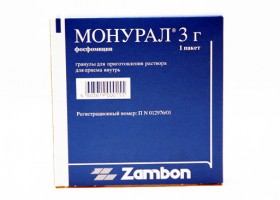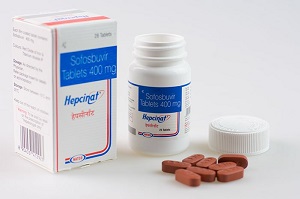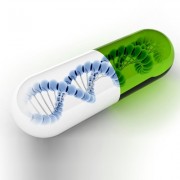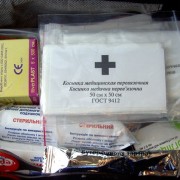Моксифлоксацин гидрохлорид описание, инструкция по применению и цена
Содержание:
Society and culture
Regulatory actions
Regulatory agencies have taken actions to address certain rare but serious adverse events associated with moxifloxacin therapy.
Based on its investigation into reports of rare but severe cases of liver toxicity and skin reactions, the European Medicines Agency recommended in 2008 that the use of the oral (but not the IV) form of moxifloxacin be restricted to infections in which other antibacterial agents cannot be used or have failed. Similarly, the Canadian label includes a warning of the risk of liver injury.
The U.S. label does not contain restrictions similar to the European label, but a carries a «black box» warning of the risk of tendon damage and/or rupture and warnings regarding the risk of irreversible peripheral neuropathy.
Generic equivalents
In 2007, the U.S. District Court for the District of Delaware held that two Bayer patents on Avelox are valid and enforceable, and infringed by Dr. Reddy’s ANDA for a generic version of Avelox. The district court sided with Bayer, citing the Federal Circuit’s prior decision in Takeda v. Alphapharm as «affirming the district court’s finding that defendant failed to prove a prima facie case of obviousness where the prior art disclosed a broad selection of compounds, any one of which could have been selected as a lead compound for further investigation, and defendant did not prove that the prior art would have led to the selection of the particular compound singled out by defendant.» According to Bayer’s press release announcing the court’s decision, it was noted that Teva had also challenged the validity of the same Bayer patents at issue in the Dr. Reddy’s case. Within Bayer’s first-quarter 2008 stockholder’s newsletter Bayer stated that they had reached an agreement with Teva Pharmaceuticals USA, Inc., the adverse party, to settle their patent litigation with regard to the two Bayer patents. Under the settlement terms agreed upon, Teva would obtain a license to sell its generic moxifloxacin tablet product in the U.S. shortly before the second of the two Bayer patents expires in March 2014. In Bangladesh, it is available with brand name of Optimox.
Interactions
Moxifloxacin is not believed to be associated with clinically significant drug interactions due to inhibition or stimulation of hepatic metabolism. Thus, it should not, for the most part, require special clinical or laboratory monitoring to ensure its safety. Moxifloxacin has a potential for a serious drug interaction with NSAIDs.
The combination of corticosteroids and moxifloxacin has increased potential to result in tendonitis and disability.
Antacids containing aluminium or magnesium ions inhibit the absorption of moxifloxacin. Drugs that prolong the QT interval (e.g., pimozide) may have an additive effect on QT prolongation and lead to increased risk of ventricular arrhythmias. The international normalised ratio may be increased or decreased in patients treated with warfarin.
Adverse effects
Rare but serious adverse effects that may occur as a result of moxifloxacin therapy include irreversible peripheral neuropathy, spontaneous tendon rupture and tendonitis,hepatitis, psychiatric effects (hallucinations, depression), torsades de pointes, Stevens-Johnson syndrome and Clostridium difficile-associated disease, and photosensitivity/phototoxicity reactions.
Several reports suggest the use of moxifloxacin may lead to uveitis.
Pregnancy and breastfeeding
Exposure of the developing fetus to quinolones, including levofloxacin, during the first-trimester is not associated with an increased risk of stillbirths, premature births, birth defects, or low birth weight. There is limited data about the appearance of moxifloxacin in human breastmilk. Animal studies have found that moxifloxacin appears in significant concentration in breastmilk. Decisions as to whether to continue therapy during pregnancy or while breast feeding should take the potential risk of harm to the fetus or child into account, as well as the importance of the drug to the well being of the mother.
Противопоказания
Противопоказания: Гиперчувствительность (в т.ч. к другим хинолонам), возраст до 18 лет (безопасность и эффективность применения не определены; следует иметь в виду, что моксифлоксацин вызывает артропатию у молодых растущих животных). Ограничения к применению: Синдром удлинения интервала QT; некорректируемая гипокалиемия; одновременное использование антиаритмических средств IA класса (хинидин, прокаинамид) или III класса (амиодарон, соталол); заболевания ЦНС, предрасполагающие к возникновению судорожных припадков; эпилепсия; выраженная печеночная недостаточность (Child Pugh Class C). Применение при беременности и кормлении грудью: При беременности возможно, если ожидаемый эффект терапии превышает потенциальный риск для плода (адекватных и строго контролируемых исследований безопасности применения у беременных женщин не проводили). Моксифлоксацин экскретируется в грудное молоко крыс
Учитывая, что моксифлоксацин может проникать в грудное молоко кормящих женщин и вызывать серьезные побочные реакции у детей, находящихся на грудном вскармливании, кормящим женщинам следует прекратить либо грудное вскармливание, либо применение моксифлоксацина (учитывая важность лекарства для матери)
Показания к применению
Применение: По данным Physicians Desk Reference (2003), моксифлоксацин показан для лечения инфекций, вызванных чувствительными штаммами микроорганизмов, у взрослых пациентов (старше 18 лет). Острый бактериальный синусит, вызванный Streptococcus pneumoniae, Haemophilus influenzae или Moraxella catarrhalis. Обострение хронического бронхита, связанное с бактериальной инфекцией (Streptococcus pneumoniae, Haemophilus influenzae, Haemophilus parainfluenzae, Klebsiella pneumoniae, Staphylococcus aureus или Moraxella catarrhalis). Внебольничная пневмония, вызванная Streptococcus pneumoniae, Haemophilus influenzae, Moraxella catarrhalis, Staphylococcus aureus, Klebsiella pneumoniae, Mycoplasma pneumoniae или Chlamydia pneumoniae. Неосложненные инфекционные заболевания кожи и ее придатков, вызванные Staphylococcus aureus или Streptococcus pyogenes.
Pharmacology
Mechanism of action
Moxifloxacin is a broad-spectrum antibiotic that is active against both Gram-positive and Gram-negative bacteria. It functions by inhibiting DNA gyrase, a type II topoisomerase, and topoisomerase IV, enzymes necessary to separate bacterial DNA, thereby inhibiting cell replication.
Pharmacokinetics
About 52% of an oral or intravenous dose of moxifloxacin is metabolized via glucuronide and sulfate conjugation. The cytochrome P450 system is not involved in moxifloxacin metabolism, and is not affected by moxifloxacin. The sulfate conjugate (M1) accounts for around 38% of the dose, and is eliminated primarily in the feces. Approximately 14% of an oral or intravenous dose is converted to a glucuronide conjugate (M2), which is excreted exclusively in the urine. Peak plasma concentrations of M2 are about 40% those of the parent drug, while plasma concentrations of M1 are, in general, less than 10% those of moxifloxacin.
In vitro studies with cytochrome (CYP) P450 enzymes indicate that moxifloxacin does not inhibit 80 CYP3A4, CYP2D6, CYP2C9, CYP2C19, or CYP1A2, suggesting that moxifloxacin is unlikely to alter the pharmacokinetics of drugs metabolized by these enzymes.
The pharmacokinetics of moxifloxacin in pediatric subjects have not been studied.
The elimination half-life of moxifloxacin is 11.5 to 15.6 hours (single-dose, oral). About 45% of an oral or intravenous dose of moxifloxacin is excreted as unchanged drug (about 20% in urine and 25% in feces). A total of 96 ± 4% of an oral dose is excreted as either unchanged drug or known metabolites. The mean (± SD) apparent total body clearance and renal clearance are 12 ± 2 L/h and 2.6 ± 0.5 L/h, respectively. The CSF penetration of moxifloxacin is 70% to 80% in patients with meningitis.
Фармакологическое действие
Противомикробное средство из группы фторхинолонов, действует бактерицидно. Проявляет активность в отношении широкого спектра грамположительных и грамотрицательных микроорганизмов, анаэробных, кислотоустойчивых и атипичных бактерий: Mycoplasma spp., Chlamydia spp., Legionella spp. Эффективен в отношении бактериальных штаммов, резистентных к бета-лактамам и макролидам. Активен в отношении большинства штаммов микроорганизмов: грамположительные — Staphylococcus aureus (включая штаммы, нечувствительные к метициллину), Streptococcus pneumoniae (включая штаммы, устойчивые к пенициллину и макролидам), Streptococcus pyogenes (группа А); грамотрицательные — Haemophilus influenzae (включая как продуцирующие, так и не продуцирующие бета-лактамазу штаммы), Haemophilus parainfluenzae, Klebsiella pneumoniae, Moraxella catarrhalis (включая как продуцирующие, так и не продуцирующие бета-лактамазу штаммы), Escherichia coli, Enterobacter cloacae; атипичные — Chlamydia pneumoniae, Mycoplasma pneumoniae. По данным исследований in vitro, хотя перечисленные ниже микроорганизмы чувствительными к моксифлоксацину, тем не менее безопасность и эффективность его при лечении инфекций не была установлена. Грамположительные микроорганизмы: Streptococcus milleri, Streptococcus mitior, Streptococcus agalactiae, Streptococcus dysgalactiae, Staphylococcus cohnii, Staphylococcus epidermidis (включая штаммы, чувствительные к метициллину), Staphylococcus haemolyticus, Staphylococcus hominis, Staphylococcus saprophyticus, Staphylococcus simulans, Corynebacterium diphtheriae. Грамотрицательные микроорганизмы: Bordetella pertussis, Klebsiella oxytoca, Enterobacter aerogenes, Enterobacter agglomerans, Enterobacter Intermedius, Enterobacter sakazaki, Proteus mirabilis, Proteus vulgaris, Morganella morganii, Providencia rettgeri, Providencia stuartii. Анаэробные микроорганизмы: Bacteroides distasonis, Bacteroides eggerthii, Bacteroides fragilis, Bacteroides ovatus, Bacteroides thetaiotaornicron, Bacteroides uniformis, Fusobacterium spp., Porphyromonas spp., Porphyromonas anaerobius, Porphyromonas asaccharolyticus, Porphyromonas magnus, Prevotella spp., Propionibacterium spp., Clostridium perfringens, Clostridium ramosum. Атипичные микроорганизмы: Legionella pneumophila, Caxiella burnettii.
Блокирует топоизомеразами II и IV, ферменты, контролирующие топологические свойства ДНК, и участвующие в репликации, репарации и транскрипции ДНК. Действие моксифлоксацина зависит от его концентрации в крови и тканях. Минимальные бактерицидные концентрации почти не отличаются от минимальных подавляющих концентраций.
Механизмы развития резистентности, инактивирующие пенициллины, цефалоспорины, аминогликозиды, макролиды и тетрациклины, не влияют на антибактериальную активность моксифлоксацина. Перекрестная резистентность между моксифлоксацином и этими препаратами отсутствует. Плазмидно-опосредованный механизм развития резистентности не наблюдался. Общая частота развития резистентности — низкая. Исследования in vitro показали, что резистентность к моксифлоксацину развивается медленно в результате ряда последовательных мутаций. При многократном воздействии на микроорганизмы моксифлоксацином в субминимальных подавляющих концентрациях лишь незначительно повышаются показатели МПК. Между препаратами из группы фторхинолонов наблюдается перекрестная резистентность. Однако некоторые грамположительные и анаэробные микроорганизмы, устойчивые к другим фторхинолонам, чувствительны к моксифлоксацину.
Contraindications
Only two listed contraindications are found within the 2008 package insert:
- «Nonsteroidal anti-inflammatory drugs (NSAIDs): Although not observed with moxifloxacin in preclinical and clinical trials, the concomitant administration of a nonsteroidal anti-inflammatory drug with a fluoroquinolone may increase the risks of CNS stimulation and convulsions.»
- «Moxifloxacin is contraindicated in persons with a history of hypersensitivity to moxifloxacin, any member of the quinolone class of antimicrobial agents, or any of the product components.»
Though not stated as such within the package insert, ziprasidone is also considered to be contraindicated, as it may have the potential to prolong QT interval. Moxifloxacin should also be avoided in patients with uncorrected hypokalemia, or concurrent administration of other medications known to prolong the QT interval (antipsychotics and tricyclic antidepressants).
Moxifloxacin should be used with caution in patients suffering from diabetes, as glucose regulation may be significantly altered.
Moxifloxacin is also considered to be contraindicated within the pediatric population, pregnancy, nursing mothers, patients with a history of tendon disorder, patients with documented QT prolongation, and patients with epilepsy or other seizure disorders. Coadministration of moxifloxacin with other drugs that also prolong the QT interval or induce bradycardia (e.g., beta-blockers, amiodarone) should be avoided. Careful consideration should be given in the use of moxifloxacin in patients with cardiovascular disease, including those with conduction abnormalities.
Pediatric population
The safety of moxifloxacin in children under age 18 has not been established. Animal studies suggest the potential for musculoskeletal harm in juveniles.
History
Moxifloxacin was first patented (United States patent) in 1991 by Bayer A.G., and again in 1997. Avelox was subsequently approved by the U.S. Food and Drug Administration (FDA) for use in the United States in 1999 to treat specific bacterial infections. Ranking 140th within the top 200 prescribed drugs in the United States for 2007, Avelox generated sales of $697.3 million worldwide.
Moxifloxacin is also manufactured by Alcon as Vigamox.
Patent
A United States patent application was made on 30 June 1989, for Avelox, Bayer A.G. being the assignee, which was subsequently approved on 5 February 1991. This patent was scheduled to expire on 30 June 2009. However, this patent was extended for an additional two and one half years on 16 September 2004, and as such was not expected to expire until 2012.
Moxifloxacin was subsequently (ten years later) approved by the FDA for use in the United States in 1999. At least four additional United States patents have been filed regarding moxifloxacin hydrochloride since the 1989 United States application, as well as patents outside of the USA.
Medical uses
Moxifloxacin is used to treat a number of infections, including: respiratory tract infections, cellulitis, anthrax, intra-abdominal infections, endocarditis, meningitis, and tuberculosis.
In the United States, moxifloxacin is licensed for the treatment of acute bacterial sinusitis, acute bacterial exacerbation of chronic bronchitis, community acquired pneumonia, complicated and uncomplicated skin and skin structure infections, and complicated intra-abdominal infections. In the European Union, it is licensed for acute bacterial exacerbations of chronic bronchitis, non-severe community-acquired pneumonia, and acute bacterial sinusitis. Based on its investigation into reports of rare but severe cases of liver toxicity and skin reactions, the European Medicines Agency recommended in 2008 that the use of the by mouth (but not the IV) form of moxifloxacin be restricted to infections in which other antibacterial agents cannot be used or have failed. In the US, the marketing approval does not contain these restrictions, though the label contains prominent warnings against skin reactions.
The initial approval by the FDA (December 1999) encompassed these indications:
- Acute exacerbations of chronic bronchitis
- Acute bacterial sinusitis
- Community acquired pneumonia
Additional indications approved by the FDA are:
- April 2001: Uncomplicated skin and skin structure infections
- May 2004: Community acquired pneumonia caused by multidrug resistant Streptococcus pneumoniae
- June 2005: Complicated skin and skin structure infections
- November 2005: Complicated intra-abdominal infections
The European Medicines Agency has advised that for pneumonia, acute bacterial sinusitis, and acute exacerbations of COPD, it should only be used when other antibiotics are inappropriate.
No uses within the pediatric population for oral and intravenous moxifloxacin have been approved. A significant number of drugs found within this class, including moxifloxacin, are not licensed by the FDA for use in children due to the risk of permanent injury to the musculoskeletal system.
Moxifloxacin is approved for the treatment of conjunctival infections caused by susceptible bacteria.
Susceptible bacteria
A broad spectrum of bacteria is susceptible, including:
- Staphylococcus aureus
- Staphylococcus epidermidis
- Streptococcus pneumoniae
- Haemophilus influenzae
- Klebsiella spp.
- Moraxella catarrhalis
- Enterobacter spp.
- Mycobacterium spp.
- Bacillus anthracis
- Mycoplasma genitalium
Overdose
«In the event of acute overdose, the stomach should be emptied and adequate hydration maintained. ECG monitoring is recommended due to the possibility of QT interval prolongation. The patient should be carefully observed and given supportive treatment. The administration of activated charcoal as soon as possible after oral overdose may prevent excessive increase of systemic moxifloxacin exposure. About 3% and 9% of the dose of moxifloxacin, as well as about 2% and 4.5% of its glucuronide metabolite are removed by continuous ambulatory peritoneal dialysis and hemodialysis, respectively.» (Quoting from the 29 December 2008 package insert for Avelox)
Фармакокинетика
После приема внутрь моксифлоксацин абсорбируется быстро и почти полностью. После однократного приема моксифлоксацина в дозе 400 мг Cmax в крови достигается в течение 0.5-4 ч и составляет 3.1 мг/л.
После однократной инфузии в дозе 400 мг в течение 1 ч Cmax достигается в конце инфузии и составляет 4.1 мг/л, что соответствует ее увеличению приблизительно на 26% по сравнению с величиной этого показателя при приеме внутрь. При многократных в/в инфузиях в дозе 400 мг продолжительностью 1 ч Cmax варьирует в пределе от 4.1 мг/л до 5.9 мг/л. Средние Css, равные 4.4 мг/л, достигаются в конце инфузии.
Абсолютная биодоступность составляет около 91%.
Фармакокинетика моксифлоксацина при приеме в однократных дозах от 50 мг до 1200 мг, а также а дозе 600 мг/сут в течение 10 дней является линейной.
Равновесное состояние достигается в течение 3 дней.
Связывание с белками крови (главным образом с альбуминами) составляет около 45%.
Моксифлоксацин быстро распределяется в органах и тканях. Vd составляет приблизительно 2 л/кг.
Высокие концентрации моксифлоксацина, превышающие таковые в плазме, создаются в легочной ткани (в т.ч. в альвеолярных макрофагах), в слизистой оболочке бронхов, в носовых пазухах, в мягких тканях, коже и подкожных структурах, очагах воспаления. В интерстициальной жидкости и в слюне препарат определяется в свободном, не связанном с белками виде, в концентрации выше, чем в плазме. Кроме того, высокие концентрации активного вещества определяются в органах брюшной полости и перитонеальной жидкости, а также в тканях женских половых органов.
Биотрансформируется до неактивных сульфосоединений и глюкуронидов. Моксифлоксацин не подвергается биотрансформации микросомальными ферментами печени системы цитохрома Р450.
После прохождения 2-ой фазы биотрансформации моксифлоксацин выводится из организма почками и через кишечник как в неизмененном виде, так и в виде неактивных сульфосоединений и глюкуронидов.
Выводится с мочой, а также с калом, как в неизмененном виде, так и в виде неактивных метаболитов. При однократной дозе 400 мг около 19% выводится в неизмененном виде с мочой, около 25% — с калом. T1/2 составляет примерно 12 ч. Средний общий клиренс после приема в дозе 400 мг составляет от 179 мл/мин до 246 мл/мин.












